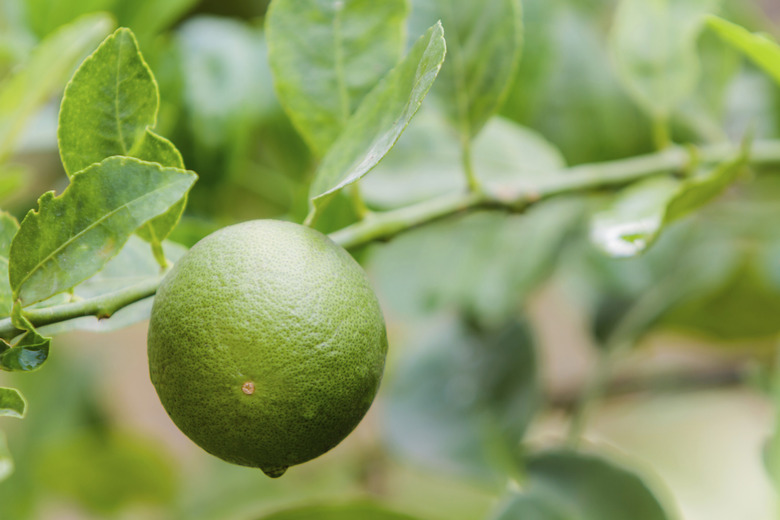How To Plant Kenepa Seeds
Kenepa (Melicoccus bijugatus) is a West Indies name for the tree also called quenepa, mamoncillo or Spanish lime. Although not actually a lime (Citrus aurantifolia, U.S. Department of Agriculture plant hardiness zones 9 through 11), kenepa bears 1- to 1 1/2-inch diameter leathery green drupes which somewhat resemble that citrus fruit. However, the sweet and sour pulp of kenepa is orange-yellow or salmon hued rather than green. Each fruit also contains one or two large seeds that you can use to propagate the tree, which is hardy in USDA zones 10 through 11. The seed coating is edible.
Identifying Kenepa Tree
Reaching heights up to 85 feet in its northern South America habitat, kenepa generally remains smaller in other climates, with each of its compound leaves containing four 2- to 5-inch leaflets. North of the equator, the gray-barked tree makes 1- to 4-inch cylindrical racemes of tiny greenish-white flowers on the tips of its branches at some point between April and June — depending on its location — followed by clusters of fruits between June and October. A deciduous tree, it will drop its leaves briefly at some point during the winter.
Collecting Kenepa Seeds
For the best germination, kenepa seeds must be planted while they are fresh, before they dry out. If possible, extract the 1/2 to 1-inch oblong, cream-colored seeds directly from kenepa fruits or acquire seeds that have been kept damp since their extraction. As the pulp tends to cling to the seeds, you should clean them off thoroughly before you plant them.
Sowing Kenepa Seeds
To sow the seeds, fill tree pots to within 1/2 inch of their rims with a moist combination of 1 part seed starting medium and 1 part sand, planting one seed 3/4 inch deep in each pot. After topping the pots with plastic wrap to help maintain moisture, place them on a seedling heat mat or on a warm high shelf to keep their temperature in the upper 70s to lower 80s Fahrenheit. If you keep their mix damp, the seeds should germinate within three to eight weeks.
Understanding Kenepa Seedlings
You can transplant your kenepa seedlings outdoors when they are about two years old and 2 feet tall. Kenepa may take five to 10 years to bloom from seed, and requires both male and female trees for the production of fruits. Although a few kenepas can make both male and female flowers on the same tree, most won't. Male trees will have blossoms with stamens but no stigmas and female trees' blossoms have stigmas but no stamens. As it generally is impossible to determine the sex of a fruit tree before it blooms, impatient gardeners may wish to root cuttings from proven male and female trees by air-layering instead.
References
- University of Florida IFAS Extension: Mamoncillo (Genip) Growing in the Florida Home Landscape1
- U. S. Forest Service; Melicoccus Bijugatus Jacq. Quenepa
- The Encyclopedia of Fruit and Nuts; Jules Janick and Robert E. Paull, Editors
- CABI Invasive Species Compendium: Melicoccus Bijugatus
- Purdue University: Mamancillo
- Tropical Trees of Florida and the Virgin Islands; T. Kent Kirk
- University of Oklahoma: Melicoccus bijugatus – Mamoncillo
- Zipcode Zoo: Melicoccus bijugatus
- The Plant Book; Susan Page and Margaret Olds, Editors
